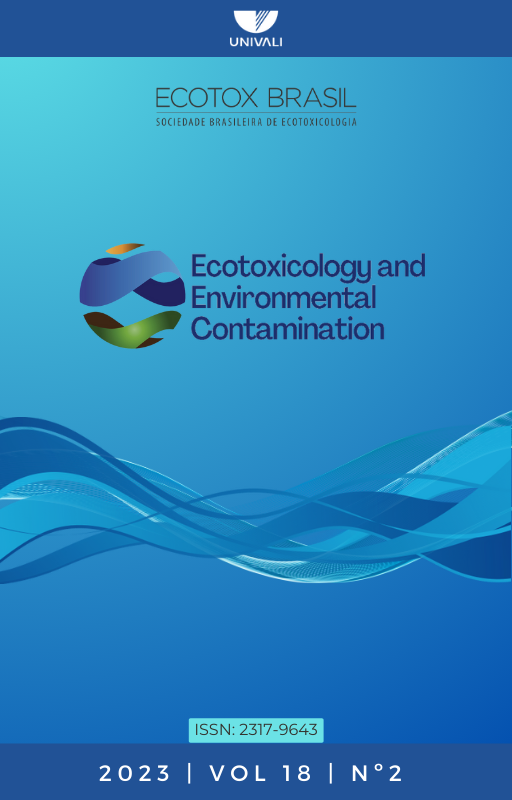Evaluation of Embryo-larval Toxicity of the Antibiotic Ceftriaxone in the Fish Danio rerio (Zebrafish)
DOI:
https://doi.org/10.5132/eec.2023.02.06Palabras clave:
Environment, Ecotoxicology, cephalosporins, Danio rerioResumen
Antibiotics comprise a class of pharmaceutical products that have been generating increasing global concern due to their detection in environmental matrices. Cephalosporins constitute the largest group of antibiotics employed for human and animal treatment in most countries. Ceftriaxone belongs to the class of third-generation cephalosporins and can reach the aquatic environment. Studies in the literature have shown the toxic effect of ceftriaxone on zebrafish at high concentrations, and on cyanobacteria at environmental concentrations. The aim of this study was to evaluate the effects of ceftriaxone (0.05 mg/L, 0.5 mg/L, 5.0 mg/L, 50 mg/L and 100 mg/L) on the development of embryos and larvae of zebrafish. The Fish Embryotoxicity Test (FET) was performed according to OECD protocol n. 236. The results showed that the tested concentrations of ceftriaxone did not cause lethal or sublethal effects on zebrafish embryos and larvae. However, considering data in the literature, added to the fact that cephalosporin-class antibiotics are widely used, the use and disposal of ceftriaxone cannot be neglected.
Descargas
Descargas
Publicado
Cómo citar
Número
Sección
Licencia
Derechos de autor 2023 Ecotoxicology and Environmental Contamination

Esta obra está bajo una licencia internacional Creative Commons Atribución 4.0.
Copyright © 2006 ECOTOX-Brasil
Copyright notice: It is a condition for publication that manuscripts submitted to this journal have not yet been published and will not be simultaneously submitted or published elsewhere. By submitting a manuscript, the authors agree that copyright for their article is transferred to the Sociedade Brasileira de Ecotoxicologia (ECOTOX-Brasil) if and when the article is accepted for publication. The copyright covers the exclusive rights to reproduce and distribute articles, including reprints, photographic reproductions or any other reproduction of a similar nature, including translations. No part of this publication may be reproduced, stored in a retrieval system or transmitted in any form or by any means, electronic, mechanical, photocopying, recording or otherwise, without permission of the publisher.
Notice: While every effort is made by the EEC, editors and editorial board to see that no inaccurate or misleading data, opinions or statements appear in this journal, they wish to make it clear that the contents of the articles and advertisements published herein are the sole responsibility of the contributors or advertisers concerned. Accordingly, the EEC, the editorial board and editors and their respective employees, officers and agents accept no responsibility or liability whatsoever for the consequences of any inaccurate or misleading data, opinion or statement.




